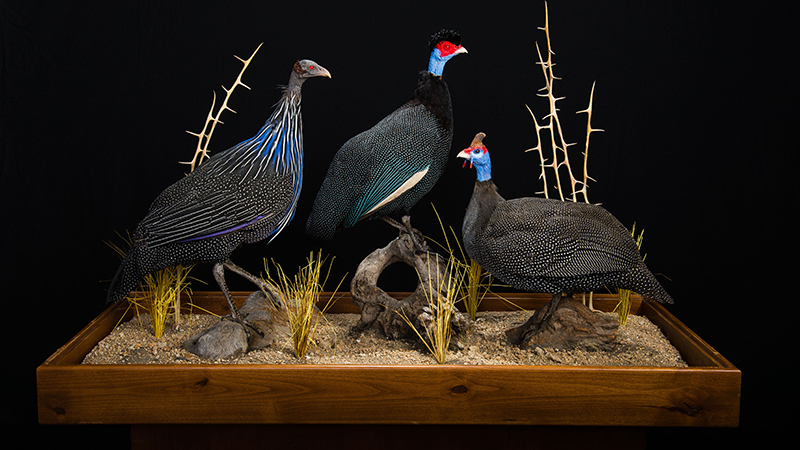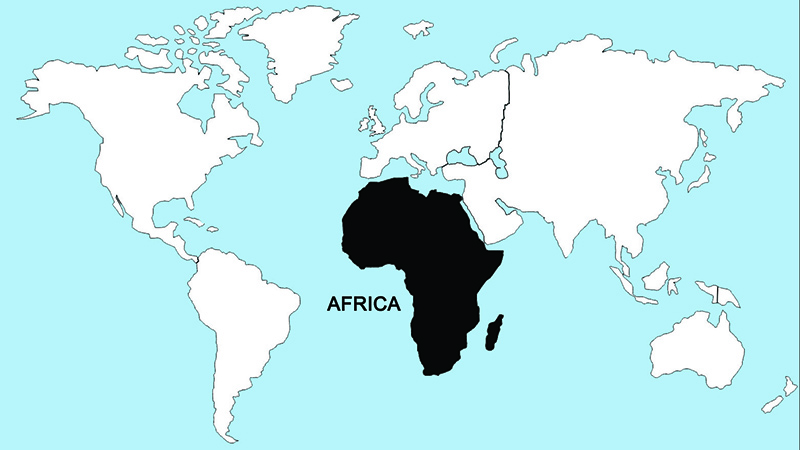Helmeted Guineafowl

The helmeted guineafowl is the best known of all the six species of this endemic African group of gallinaceous birds. They are believed to provide a kind of phyletic link between the New World Cracidae (guans, chachalacas and curassows) and the more typical quails, partridges and pheasants of the family Phasianidae. They are all medium-sized birds, roughly the size of a domestic fowl, with bare, sometimes brightly colored, heads and necks, and body plumages that tends to be black, with white spots or vermiculations. Like tinamous, they have short wings but legs and toes that are adapted for running and scratching. They have short, stout beaks, adapted for digging and seedcrushing, but they also eat fruit and some invertebrates, such as termites and other insects. Like tinamous, they are highly vocal, and are ground-nesters. Unlike tinamous, their eggshells are not brightly colored, but are notably thick and resistant to cracking. They inhabit all types of vegetation in Africa, from semi-deserts to tropical forests. Except during the breeding season, they are gregarious and while nesting they establish monogamous pair bonds.
This guineafowl is widespread across sub-Saharan Africa, and is very common in areas of mixed savannas and cultivation, and is the only guineafowl species that has been domesticated. Its "helmet" consists of a bony casque of variable height and shape in different races. The species has a varied range of calls, some of which are very loud and can be heard at considerable distances. Monogamous pairs form over an extended period and once paired, males strongly defend their mates against the attention of other males. From 6–12 eggs are laid in simple ground nests, and are incubated by the female or possibly both sexes for 24–27 days. Unlike the young of most birds, which peck their way out of the shell in a fairly consistent and orderly way, the shell is fragmented into small pieces as the hatchings (called ”keets”) emerge. The chicks grow remarkably fast, and are able to flutter up to low branches when only abou ta week old.
Regions Birds Are Found

Collection Location & Year
Central African Republic 1999
Taxonomy
| Order | Galliformes |
|---|---|
| Family | Numididae |
| Species | Numida |
| Genus | meleagris |
Gender
Male
References
- Cramp, S., and K. E. L. Simmons, eds. 1980. The Birds of the Western Palearctic. Vol. 2. (Hawks to Bustards) London, UK: Oxford Univ. Press.
- del Hoyo, J. A. Elliot, and J. Sargatal, eds. 1994. Handbook of Birds of the World. Vol. 2 (New World Vultures to Guineafowl). Barcelona, Spain: Lynx Editions.
- Urban, E K., C. L. Fry, and S. Keith, eds. 1996. The Birds of Africa. Vol. 2. London, UK: Academic Press.